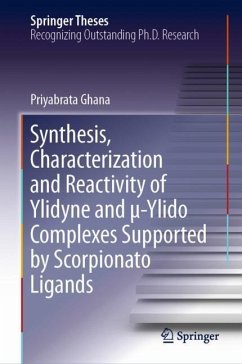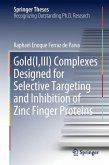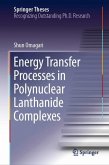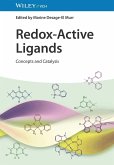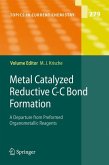This book explores the development of the first open-shell heavier tetrylidyne complexes featuring a tetrel-centered unpaired electron, and unprecedented metallatetrylidynes containing a multiply-bonded, linear-coordinated single heavier tetrel atom embedded between two metal centers.
The chemistry of compounds featuring triple bonds of the heavier Group-14 elements Si-Pb with transition metals is a very challenging research area, which combines modern molecular main-group element with transition-metal chemistry, and is of fundamental importance for the understanding of chemical bonding. During the last 15 years, the research in this area has witnessed considerable progress in isolating a series of closed-shell tetrylidyne complexes. However, despite numerous attempts, open-shell tetrylidyne complexes and heavier group 14 element congeners of metallacarbynes and carbide complexes remained inaccessible.
In this book, readers will find more about the synthesis, full characterization and reactivity studies of these novel complexes that uncovered a plethora of exceptional products, including a novel m3-silicido complex, the first dimetallasilacumulene with a linear, two-coordinated single silicon atom and the first compounds of planar tetracoordinated silicon (ptSi) (Anti-van't Hoff-Le Bell Silicon). Readers will also learn about the isolation and full characterization of the first room-temperature stable disilavinylidene, a silicon analogue of the very reactive vinylidenes (R2C=C:), and the first intermetallic plumbylidyne ligand transfer reactions.
The chemistry of compounds featuring triple bonds of the heavier Group-14 elements Si-Pb with transition metals is a very challenging research area, which combines modern molecular main-group element with transition-metal chemistry, and is of fundamental importance for the understanding of chemical bonding. During the last 15 years, the research in this area has witnessed considerable progress in isolating a series of closed-shell tetrylidyne complexes. However, despite numerous attempts, open-shell tetrylidyne complexes and heavier group 14 element congeners of metallacarbynes and carbide complexes remained inaccessible.
In this book, readers will find more about the synthesis, full characterization and reactivity studies of these novel complexes that uncovered a plethora of exceptional products, including a novel m3-silicido complex, the first dimetallasilacumulene with a linear, two-coordinated single silicon atom and the first compounds of planar tetracoordinated silicon (ptSi) (Anti-van't Hoff-Le Bell Silicon). Readers will also learn about the isolation and full characterization of the first room-temperature stable disilavinylidene, a silicon analogue of the very reactive vinylidenes (R2C=C:), and the first intermetallic plumbylidyne ligand transfer reactions.

